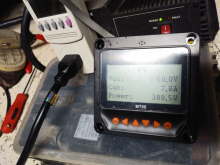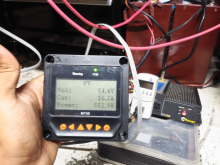Go2Guy
New Member
- Joined
- Feb 15, 2021
- Messages
- 40
For example i am using a tracer 40a at 12v mppt,. Its listed maxium is 500 watts at 12 v, i currently own 4 250w panels. if i hooked 2 panels ie 500 watts I get 250-300 watts until its high noon than i get about 450 watts, at arround 9am i only get about 200 watts, however for testing purposes I hooked up all 4 250w panels [1000w] and i was getting close to 400 watts at 9am!!!!!, I obviously was not over loading it because it was not at full sun. . . and i was with in the rating of the unit.
so back to the million dollar question, is there a way to keep a 1000 watts hooked up at all times and have the unit self regulate it down to its maxium of 500 watts that way i get full power all day as opposed to only for a couple hours during high noon . . .I have heard of a couple controllers doing this[cant remember which ones,] its seems counter intuitive to not do this. . .why run only 500 watts of panels and get full power only 2-3 hours a day when i can run 1000w and get close to full power[500w] all day [presuming the unit self regulates] . Is there a way to safely do this?
so back to the million dollar question, is there a way to keep a 1000 watts hooked up at all times and have the unit self regulate it down to its maxium of 500 watts that way i get full power all day as opposed to only for a couple hours during high noon . . .I have heard of a couple controllers doing this[cant remember which ones,] its seems counter intuitive to not do this. . .why run only 500 watts of panels and get full power only 2-3 hours a day when i can run 1000w and get close to full power[500w] all day [presuming the unit self regulates] . Is there a way to safely do this?





